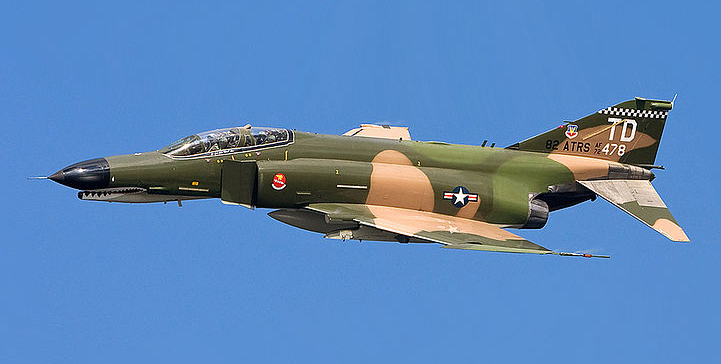
On November 20, the Japanese Air Force officially retired its last Phantom fighter with a live broadcast ceremony.
For almost 50 years, Japan flew the McDonnell F-4; the two seater fighter aircraft is now giving way to the U.S. F-35, according to German news outlet weboage FlugRevue.
While the last few years saw squadron after squadron saying goodbye to the legendary Phantom, Japan’s self-defense forces had preserved this last veteran fighter for old times sake. While the reconnaissance squadron 501 had bid goodbye to its “Photo Phantoms” sometime this spring, the 301 Hikotai from Hyakuri had still held on to their 24 F-4EJ and had continued to perform air sovereignty missions.
With this live broadcast, the 301 Hikotai said goodbye to their phantom jets. This phasing out celebration comes in the shadow of the coronavirus-induced COVID-19 pandemic which emerged from Wuhan China. A few weeks back, the 301 squadron had given two of their F-4EJs special paintwork coating for the farewell ceremony on the airbase shown live on the Internet, which was attended by not only current squadron members but also by high ranking military officials. The The F-4EJ has now been ceremoniously retired.
While officially, the phantom has retired from Japan’s self-defense forces, it will continue to do flight tests at Japan’s Gifu airbase until March 31, 2021.
As for the 301 Hikotai, it will jump several generations of fighter jets and switch to the Lockheed Martin F-35A. The phasing out of the Phantom will also see the 301 Hikotai saying goodbye to the Hyakuri Air Base since the squadron will henceforth be based at Misawa Air Base.
Japan is set to produce F-35s and will become a center for next-generation fighter jets.
Developing next-gen fighters aircrafts
On August 4, Japan’s Ministry of Defense had announced that the responsibility of constructing next-generation fighter jets, currently known as the F-X, will be taken up by a single company, which will be known as a “single prime” contractor.
Japan is also slated to make 105 F-35A and B 5th generation fighter aircrafts for its self-defense forces at its Nagoya assembly plant.
While earlier, authorities were of the view that it was more expensive to make F-35 fighter jets at the MHI’s Final Assembly and Check-Out (FACO) assembly line located in Nagoya; and that it was more cost effective to import ready-made machines from the United States and assemble them in Japan, they have taken a different point of view now saying, manufacturing the machines domestically will be cheaper than importing them from the U.S. This will help alleviate some pressure from Lockheed Martin’s production lines in Fort Worth and possibly result in the development of new methods to further trim the cost of construction of aircraft thus reducing their overall costs.
The issue at hand is not just about being cost effective but also about maximizing the independence of the F-35 acquisition program, and thus increasing the efficiency of its production and the speed of its implementation into service. Given the current geopolitical situation in the Far East, the development is certainly not surprising.
As for developing Japan’s next generation Japanese fighter jet, Tokyo has selected Mitsubishi Heavy Industries as its prime contractor, according to a statement from Japan’s Defense Ministry dated October 31, 2020. A foreign partner could potentially be announced in the coming months.
Mitsubishi Heavy Industries is Japan’s only supersonic fighter aircraft maker; it had made the F-1 combat trainer and currently produces the Mitsubishi F-2, which is based on the F-16C. The company also runs the Japanese F-35 final assembly line.
Despite the availability of high-tech advances and the strength of its economy, Japan has a lot of catching up to do when it comes to developing a modern engine, AESA-class radar and stealth technologies.
While Japan had ignited the minds of military analysts through its ATD-X demonstrator in 2016-2018 and drew comments as being the prototype for the “Mitsubishi F-3”, the silhouette of the planned fighter turns out to be completely different; it will not be “something between the F-35 and F-22”, but rather an airplane resembling the Northrop YF demonstrator 23 – larger than the Raptor and with a massive range.
Japan’s fighter’s program has the following cut-off dates – work on the engine design and the airframe should end by March 31, construction of the first prototype should begin by 2024, with flight tests scheduled for 2028. The fighter is scheduled to enter assembly lines in 2035.




